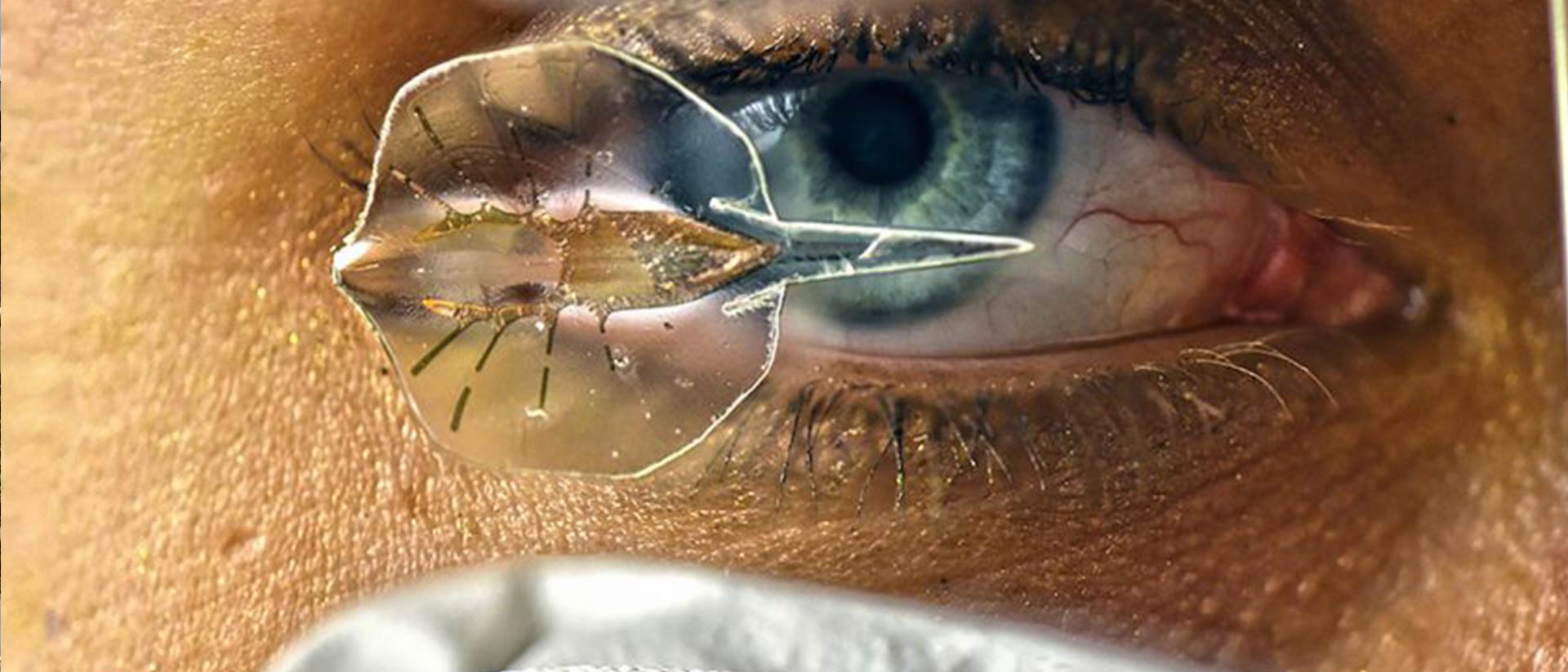
Elegant hybrid being

Are machines made from biological components part of our future? The signs for this solidify: now scientists from Harvard University built a floating bio-robot. It exists half of lifeless components and half of living cells. With its flat, transparent and only 16 millimeter long body it resembles a ray.
Light plays a decisive role with the hybrid being. Its roughly 200,000 living muscle cells from rats respond to light irradiation. Through them the bioengineers are able to control the body. Those genetically manipulated cells contract as soon as light hits them, so the body gets propulsion, the scientists around Sung-Jin Park write in the scientific magazine “Science” (July 8, 2016). The cells pass over the motion signals by transferring muscle activation signal to their neighboring cells. With that a chain reaction takes place. An elegant, wavelike movement results, which comply with those of rays in nature. “A periodic, optical stimulation enables the ray to move in a rhythmical forward movement,” the researchers say.
In its interior the bio-robot consists of a golden skeleton. It acts like muscle by storing elastic energy to recover initial shape when deformed. The interaction of skeleton and muscles creates a wavelike movement. The scientists even succeeded in controlling the ray around obstacles .
The robot swims independently in an isotonic solution and reaches in the process a speed of about 3.2 millimeters per second. It obtains its energy from glucose that is present in the fluid and is collected by the cells. With this the researchers keep the cells alive: in an experiment the machine had left 80 percent of its original performance after operating for six days.
It already is a tradition: Robotics copies from nature. For many years yet researchers e.g. connect brain cells to chips and promote them to interact with each other. Similar to bees, mini-drones pollinate flowers. Bionic hand prosthesis are connected to the nervous system. They are controlled by brain signals.
Sung-Jin Park and his colleagues are convinced that hermaphrodites like their hybrid-ray, which combine biological and artificial components, in the future will be build autonomously and adaptable and will even display complex behavior.









